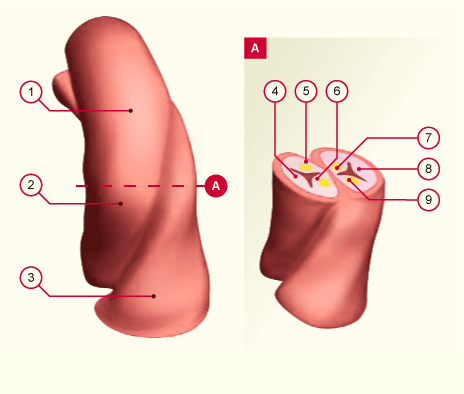
1
2
3
4
5
6
7
8
9 |
Aorta
Conotruncal crease
Truncus pulmonalis
Posterior aortic valve
Left aortic valve
Right aortic valve
Right truncus pulmonalis valve
Anterior truncus pulmonalis valve
Left truncus pulmonalis valve |
|
|
|
Fig. 18
On the left is the conotruncus as seen ventrally (45° from the right).
In the right image (at A) the truncus is cut away so that the semilunar valve level is visible. Dorsally lies the aorta with right, left and dorsal valves and ventrally lies the truncus pulmonalis with right, left and ventral (anterior) cushions.
|
Animation
|
|
From the common outflow tract, the conotruncus, arise two outflow vessels: the aorta and the truncus pulmonalis.
Animation (671 kB)
|
|
|

